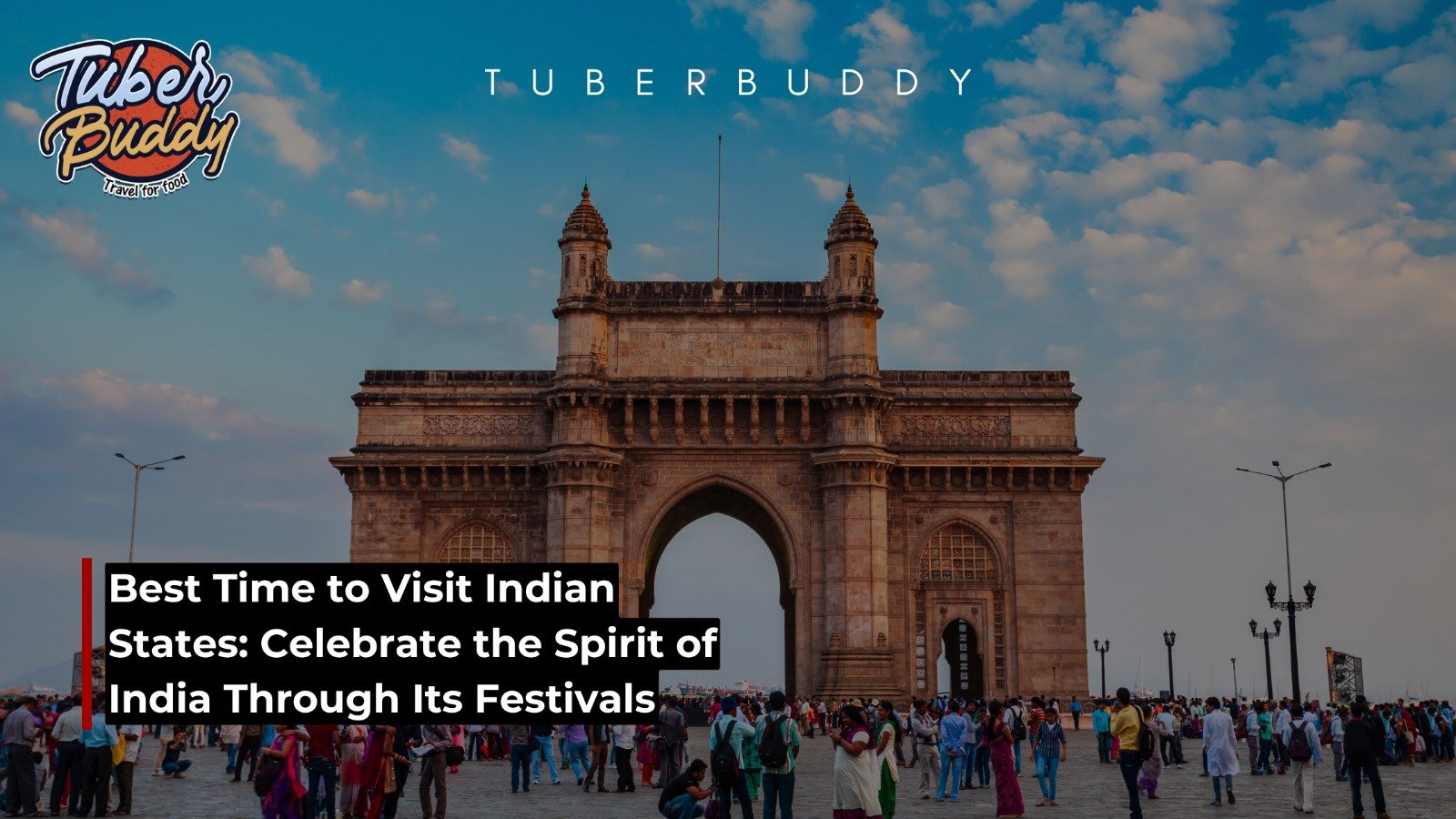Best Time to Visit Indian States: Celebrate the Spirit of India Through Its Festivals

India is a land of vibrant cultures, timeless traditions, and grand festivals that bring people together in joyous celebration. If you’re planning to explore India, time your visit with its festive seasons to truly experience its soul. Here’s a guide to the most iconic Indian festivals, when and where to experience them, and the cultural stories behind each celebration.
1. Uttar Pradesh – Diwali & Dev Deepawali (October-November)
Why Visit: Diwali in Uttar Pradesh, especially in Ayodhya and Varanasi, is not just a festival—it’s a divine spectacle. The entire region is illuminated with countless oil lamps, creating a celestial ambiance in North India.
Cultural Significance: Diwali marks the return of Lord Rama to Ayodhya after 14 years of exile and his victory over Ravana. Dev Deepawali, celebrated 15 days later in Varanasi, is believed to be the day when the gods descend to bathe in the Ganges.
What to Expect: Witness the Deepotsav in Ayodhya with over a million diyas lit at once. In Varanasi, the ghats shimmer with earthen lamps and echo with chants, fireworks, and cultural performances.
2. Maharashtra – Ganesh Chaturthi (August-September)
Why Visit: Ganesh Chaturthi is the heart of Maharashtra, especially Mumbai and Pune, where the atmosphere is electric with devotion and grandeur.
Cultural Significance: According to Hindu beliefs, he plays a vital role at the start of any venture, making him one of the most worshipped gods in Indian culture. Lord Shiva and Parvati are said to have sent him to the world to bless devotees with prosperity.
What to Expect: Gigantic idols, musical processions, traditional Maharashtrian sweets like modaks, and a 10-day celebration that ends with Visarjan (immersion of idols in the sea or rivers).
3. Goa – Sao Joao Carnival (June)
Why Visit: If you’re in Goa during June, don’t miss the lively Sao Joao Festival, also called Goa Carnival.
Cultural Significance: Sao Joao honors St. John the Baptist, who leapt in his mother’s womb upon hearing of Jesus’ birth. The festival symbolizes joy, new life, and the monsoon’s abundance.
What to Expect: Watch locals leap into wells, decorate colorful boats, dance to Konkani beats, and enjoy rain-drenched parades. It’s a unique blend of faith, fun, and festivity.
4. Assam – Bihu (April, January, October)
Why Visit: Bihu is celebrated three times a year—Rongali (April), Bhogali (January), and Kongali (October)—each marking different phases of the Assamese agricultural calendar.
Cultural Significance: Bihu is deeply woven into the fabric of Assamese life, reflecting the state’s agricultural rhythm, seasonal transitions, and joyful spirit. Celebrated in three forms—Rongali, Bhogali, and Kongali—each festival marks a different phase of farming life, honoring nature, harvest, and community bondingRongali Bihu, the most popular, celebrates the arrival of spring and the Assamese New Year.
What to Expect: Folk dances, traditional music, feasts with pithas and larus, and a community-driven celebration of nature and harvest.
5. West Bengal – Durga Puja (September-October)
Why Visit: Durga Puja is the grandest festival in West Bengal, particularly Kolkata. The city comes alive with vibrant processions, elaborate pandals, and rhythmic dhak beats—turning every street corner into a living canvas of devotion and creativity.
Cultural Significance: This festival reflects feminine strength, divine energy, and the spirit of righteousness deeply rooted in Bengali culture.
What to Expect: Majestic pandals (temporary temples), artistic idols, cultural programs, traditional Bengali cuisine, and night-long pandal hopping.
6. Tamil Nadu – Pongal (January)
Why Visit: Pongal is Tamil Nadu’s harvest festival, celebrating the sun god and the farmer’s hard work.
Cultural Significance: Pongal is a four-day harvest festival that welcomes the Tamil month of ‘Thai,’ symbolizing prosperity and fresh beginnings. Rooted in agrarian traditions, it expresses gratitude to the Sun God, farm animals, and the Earth for a fruitful harvest, showcasing Tamil Nadu’s deep connection with nature and farming culture.
What to Expect: Boiling the first rice of the season, kolam (floor art), traditional music, bull-taming sports like Jallikattu, and sugarcane-laced feasts.
7. Gujarat – Navratri (September-October)
Why Visit: Gujarat’s Navratri is a nine-night dance and devotion extravaganza.
Cultural Significance: Dedicated to Goddess Durga’s nine avatars.
What to Expect: Dress in vibrant chaniya cholis and join locals in Garba and Dandiya Raas dance.
8. Kerala – Onam (August-September)
Why visit : Onam is Kerala’s most vibrant celebration, welcoming the legendary King Mahabali’s return and reflecting the state’s deep-rooted traditions. With floral carpets, grand feasts, and boat races, it’s a joyful tribute to unity, harvest blessings, and the rich heritage of Malayali culture.
Cultural Significance: It celebrates the return of King Mahabali, whose reign was considered Kerala’s golden age.
What to Expect: Lavish Onam Sadya (vegetarian feasts), Vallam Kali (snake boat races), flower carpets (Pookalam), and traditional art forms like Kathakali and Pulikali.
Plan Your Trip Around India's Festival Calendar
Each Indian festival reflects the state’s history, mythology, agriculture, and faith. They are not just holidays but cultural windows into the Indian way of life. Whether you’re a history lover, culture enthusiast, or traveler seeking authentic experiences, syncing your visit with these festive months will give you unforgettable memories.
So pack your bags, charge your camera, and prepare to dance, eat, chant, and cheer your way through India’s most glorious celebrations!
For more travel updates and tips follow TuberBuddy !
